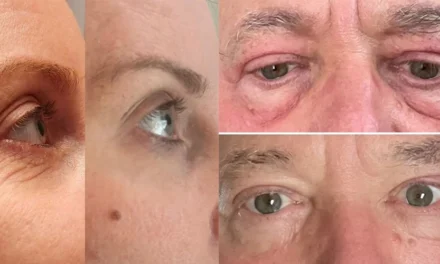By Zoe Harrison
Summer is in full swing, and our skin is feeling the heat. We spoke with Dr. Purvisha Patel from Advanced Dermatology & Skin Cancer Associates for tips on protecting your skin and beating the heat.
Prepare for Time in the Sun
Many people want to exfoliate before baring their skin, and Dr. Patel recommends a physical exfoliant like a dry brush or a salt or coffee-based scrub that does not have microbeads. In terms of shaving body hair, prevent bumps and irritation by shaving in the direction of hair growth rather than against it, and avoid shaving gels that contain coconut and olive oil. For regular skincare and makeup, opt for lightweight, oil-free products during the summer. If you are a retinol user, consider reducing concentration when you are exposed to lots of sun.
Dress for your Best Skin
Wearing light-colored, loose-fitting clothing is ideal for hot summer days. Dark clothing absorbs the sun and can cause increased sweat, and sweating in tight clothing can cause rashes and irritation. Pair your light, loose clothing with a big hat and sunglasses, and your face will have a layer of shade to protect from the sun.
Apply & Reapply your Sunscreen
Dr. Patel recommends a minimum of SPF 30 sunscreen daily, applied every two hours. She also suggests mineral blocks (which deflect UV radiation) over chemical blocks (which absorb UV radiation). TIZO, ELTA MD, and Neutrogena all offer great mineral sunscreens to keep your summer skin fresh and prevent damage. Applying antioxidants like Vitamin C before sunscreen is also encouraged to help with free radical breakdown. It is generally best to have time in the shade to prevent too much sun exposure.
Revitalize your Skin After Sun Exposure
Generally, stay hydrated by drinking lots of water and using a lightweight moisturizer and lotion. In the case of a sunburn, take cool showers to cool the skin down, then use aloe vera or ice to help reduce redness. In severe sunburns, over-the-counter hydrocortisone is recommended to help reduce redness and discomfort. Don’t peel off a sunburn — this can cause additional damage to the deeper layers of the skin.
Monitor your Skin Year-Round
Check moles frequently, and make sure you are looking at the ABCs: Asymmetry, Border Irregularity, and Colors, and monitor any changes, including areas that may not even be exposed to sun. To treat sun damage, consult with your dermatologist about chemical peels and laser treatments.
For more information or to make an appointment, visit Advanceddermatologymemphis.com or call 901.759.2322.










